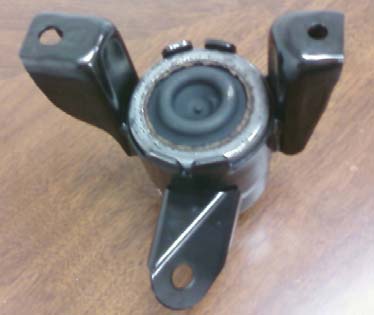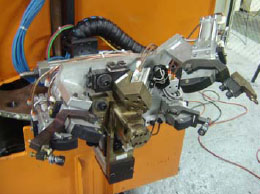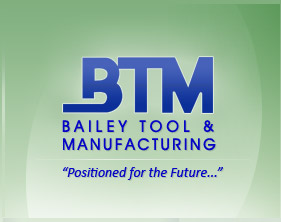Weld Cell Concept
Case Study: Bailey Develops New Robotic Weld Cell for
Assembling Vibration Isolation Hydro-Mount
The Challenge
The new weld cell required capability to support 4 separate parts in proper relationship to each other, and to subsequently perform 5 separate welding operations and achieve a 75 part per hour throughput rate for the process. Additionally, the "roundness" of the Can portion of the assembly after welding was a major, controlling concern for the effort. Selection of the proper welding process was important but there were no prototypes available to develop the process with.

Assembled Hydro-Mount
The Bailey Solution
Bids were taken for a turn-key system - a two position turntable with single welding robot and the cost was significant. Since Bailey already had two welding robots available and a heavy turntable assembly, the company decided that it could put a cell together on its own for less money which would be a functionally better machine, be completely supportable/programmable by Bailey and allow a better throughput with some redundancy of function. In case one of the robots should require repair, the whole job could be completed with the other robot alone.
Since development time was short, Bailey sub-contracted the actual welding fixtures to a skilled fixture builder and Bailey Engineering concentrated on the development and adaptation of the turntable which would present the fixtures to the welders, the control system and construction of the auxiliary equipment including a quenching and rustproofing tunnel spray system. Bailey staff purchased the components for and integrated the overall cell control system, mastered operation of the robots in a welding mode, and assembled the cell equipment, first in the maintenance facility for "coarse" programming and then in the manufacturing bay where the cell was installed and bought off by manufacturing and the Customer.

A. Loading Fixture |

B. Fully Loaded in Fixture |

C. Fully Loaded and Clamped |

D. Welded State |
| 











